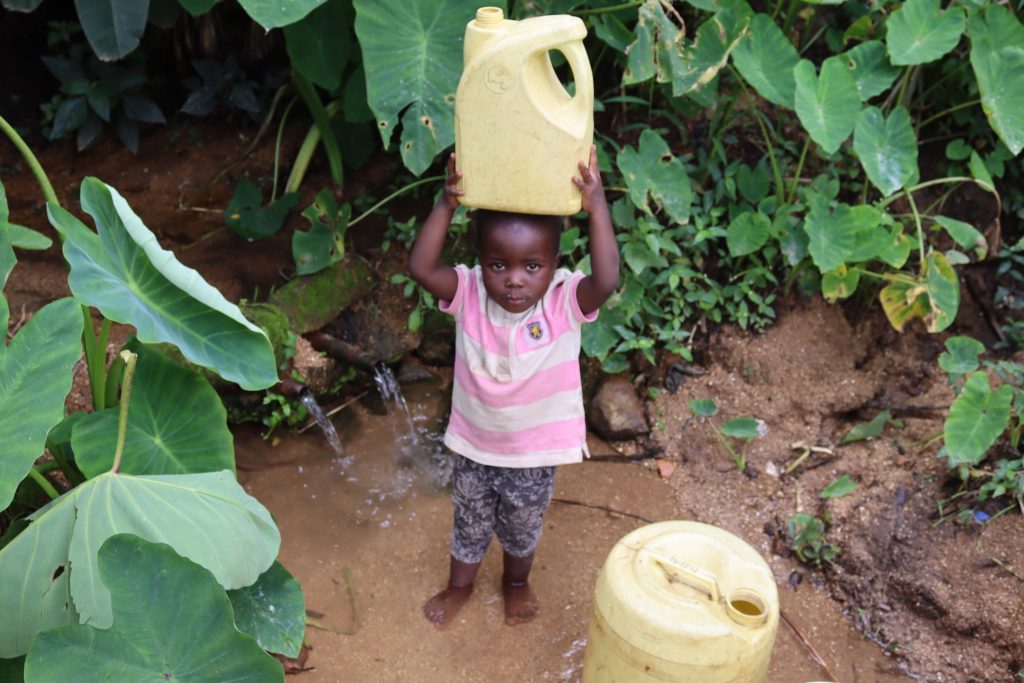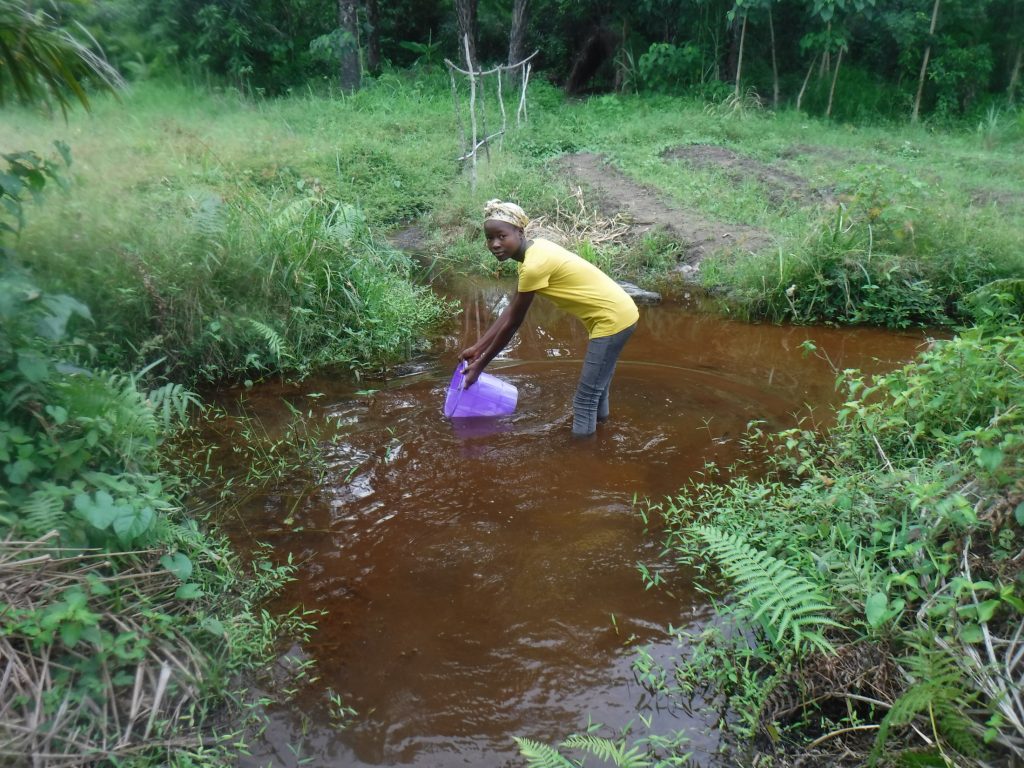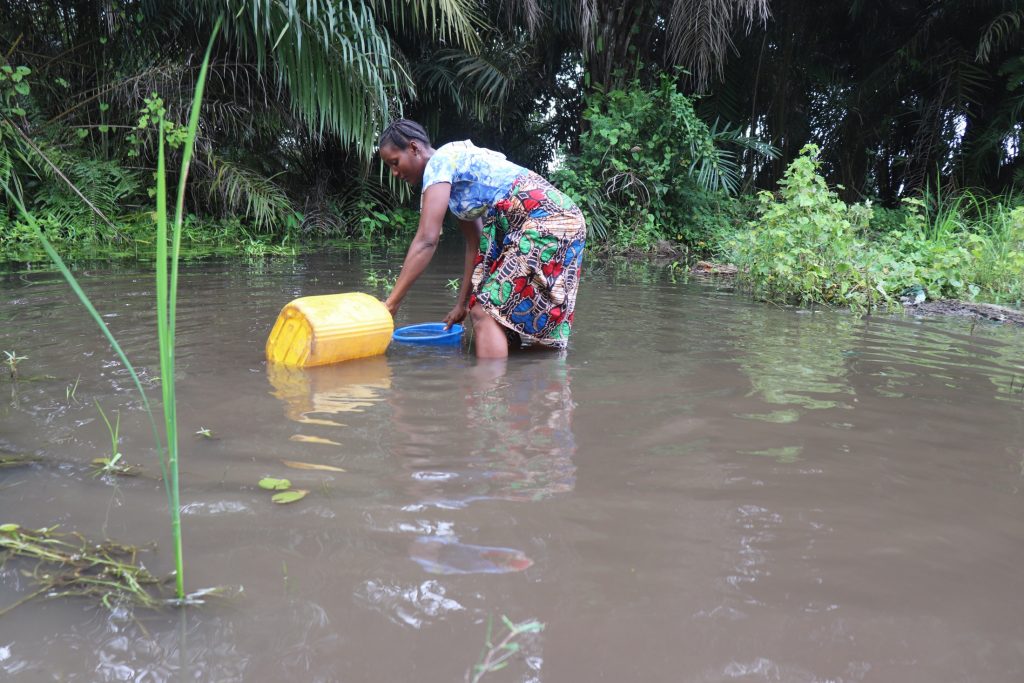The Water Crisis, Explained at Five Levels
Donors have asked us for tips on explaining the water crisis to their children. After all, we’ve seen kids do absolutely amazing things to combat water inequality, and we know how powerful their voices can be in swaying their friends, parents, and teachers to join the fight against the water crisis.
Upon beginning The Water Project, our founder, Peter, worked with a group of kids in New Brunswick, Canada, to fundraise for clean water. Since then, so many smart and resourceful kids have held bake sales, undertaken Water Challenges, and much more in the name of spreading safe water through The Water Project.
But children aren’t the only ones asking questions about water scarcity. Students, educators, and professionals often want to understand the deeper causes of the crisis and explore how policies, climate change, and economic factors shape water access worldwide. Whether you’re explaining the issue to a young child, discussing it in a classroom, or considering it from a global policy perspective, understanding the water crisis at different levels helps us all become better advocates for change.
Through this article, we hope to equip everyone — from children to experts — with the knowledge to engage in meaningful conversations about water access and solutions.
1. Kid Level (Age 5) – Water is Life
Water isn’t just for drinking — it keeps us clean, healthy, and safe.
Some people don’t have clean water to drink or wash their hands. Instead, they have to walk for a long time to find water, and sometimes it makes them sick. That’s not fair!
Imagine if you were really thirsty, but there was no water in the house. Now imagine you had to walk a really long way to find water. And when you got there, the water was dirty.
We need to help so everyone in the world can have clean water close to home.

Questions Kids Might Ask & Suggested Answers:
Q: Why don’t they just drink juice or milk instead?
A: Juice and milk come from water, too! Without water, there would be nothing to drink at all.
Q: Why can’t they just clean the water?
A: Cleaning water takes special tools and machines that many places don’t have. That’s why we work to help them get clean water closer to home.
Q: Why doesn’t someone just bring them water?
A: Bringing water every day would be really hard and wouldn’t fix the problem. It’s better to help build wells and water systems so they always have water nearby.
2. Elementary Level (Age 10) – The Daily Struggle for Water
Some people don’t have water near their homes. Instead, they have to walk for hours every day to find it. And when they do, the water can be full of germs that make them sick. Many diseases come from drinking unsafe water.
When people have to spend hours finding water, they can’t do other important things like working, going to school, doing homework, or playing. Some children spend so much time fetching water that they miss school altogether.
Organizations like The Water Project build wells, rainwater tanks, and other clean water systems so people don’t have to walk so far or drink unsafe water.

Questions Kids Might Ask & Suggested Answers:
Q: Why don’t they just move somewhere with water?
A: Moving isn’t easy. Their families may have lived in these areas for generations, and they may not have the money or opportunity to leave.
Q: Why do some places have water and others don’t?
A: Water is not spread evenly across the world. Some places have lakes and rivers, while others are very dry and don’t get much rain. Also, some countries have more money than others, and getting to the water can cost a lot. So some people live in dry areas and are able to get water from underground or other places because they have more money, but other countries can’t afford to do that.
Q: Can’t they just use rainwater?
A: Rainwater can help, but in dry areas, it doesn’t rain all the time. In some places, it only rains during half of the months of each year! People need a way to collect and store rainwater for when it doesn’t rain.
3. High School Level (Teenager) – Why Does the Water Crisis Exist?
Not all water scarcity looks the same.
Some places experience physical water scarcity, meaning there simply isn’t enough water available. This often happens in desert regions or areas with long dry seasons where lakes and rivers dry up. People in these areas may have no choice but to walk long distances to find any water at all.
Other places experience economic water scarcity, where water technically exists, but people cannot access it due to a lack of infrastructure, high costs, or mismanagement. For example, a country may have underground water or nearby rivers, but if there are no wells, pipes, or treatment facilities, people still can’t get safe water.
There are several major causes of this crisis. Climate change leads to unpredictable weather, increasing the risk of droughts and floods, and making water sources less reliable. Many places also lack the infrastructure — pipes, wells, and treatment systems — that would ensure safe water access. Even when water is available, it can be expensive, making it unaffordable for the poorest communities.
In some cases, government mismanagement or corruption means that funds meant for clean water projects don’t reach the communities that need them most. This makes it even harder for people in rural and low-income areas to get the help they need.

Tough Questions Teenagers Might Ask & Suggested Answers:
Q: If other countries have plenty of water, why can’t we just send it to places that need it?
A: Transporting water long distances is expensive and impractical. Instead of shipping water, it’s more effective to help communities develop sustainable water sources locally.
Q: If people know the water is dirty, why do they drink it?
A: Because they have no other choice. When the only available water is contaminated, people drink it to survive, even if it makes them sick. In the places where The Water Project works in Africa, people often don’t have appliances like stoves or even electricity, so boiling the water to kill its bacteria isn’t always practical, especially when people have to travel farther and farther away from home for firewood.
Q: Why don’t governments fix this problem?
A: Some governments don’t have the money or infrastructure to provide clean water, while others may not prioritize it. That’s why organizations and local communities work together to create sustainable solutions.
4. College Level – The Global Impact of Water Scarcity
Water scarcity is a global humanitarian crisis affecting health, education, gender equality, and economic stability. When communities lack access to water, health systems become overburdened by preventable diseases, and children — especially girls — miss school because they must spend hours fetching water.
Without reliable water access, families struggle to grow food, businesses cannot operate efficiently, and entire economies suffer. In some regions, competition for limited water resources can even lead to tensions and conflict.
While environmental and economic factors are major drivers of water scarcity, governance challenges can also slow progress. Limited infrastructure funding, inefficient management, and competing priorities make it difficult to provide equitable access to water. Strengthening local leadership and driving community-driven solutions helps ensure water resources are managed effectively and sustainably.
The water crisis isn’t just about individuals — it affects economies, education, and global stability.
5. Expert Level – Policy, Governance, and Sustainable Solutions
Solving the water crisis requires addressing its underlying governance, policy, and sustainability challenges.
Many countries struggle to manage water resources effectively due to weak policies, a lack of funding, and competing priorities. In some areas, water infrastructure is inadequate or poorly maintained, leading to persistent water shortages and contamination issues. Ensuring equitable water distribution requires strong institutions, transparent governance, and investment in sustainable water management systems.
One of the most effective approaches to long-term water security is community-led water management, where local residents take ownership of their water systems. The Water Project supports self-help groups (SHGs) in Southeast Kenya and Uganda, where community members organize themselves to manage and maintain their own water resources.
These groups take responsibility for collecting small contributions to fund repairs, overseeing water usage, and advocating for further infrastructure improvements. By placing decision-making power in the hands of those directly affected, these models create lasting change, ensuring that water access is not dependent on external aid alone.
Integrated Water Resource Management (IWRM) complements these grassroots efforts by promoting the coordinated development of water, land, and resources to maximize social and economic benefits while preserving ecosystems. Decentralized water systems allow communities to maintain and oversee their own water supplies, reducing reliance on distant authorities or unsustainable infrastructure projects.
Additionally, transboundary cooperation between nations sharing water sources helps mitigate conflicts and ensures fair distribution.
Climate adaptation strategies are becoming increasingly necessary as water availability fluctuates due to changing weather patterns. Investing in technologies such as rainwater harvesting and solar-powered pumps helps communities become more resilient to droughts and water stress.
The key to sustainable solutions lies in community involvement, ongoing monitoring, and adaptive policies that prioritize water as a human right rather than a commodity.
Conclusion: The Water Crisis is Solvable
From the simplest explanation to the most complex, one thing remains clear: the water crisis is real, and it’s solvable.
How You (and Your Kids!) Can Help:
- Donate – Help fund sustainable water solutions.
- Share – Raise awareness about the global water crisis using our ready-made social media graphics.
- Start a fundraising page — Our tools make it easy for you to use your newfound knowledge to spread awareness and action to help solve the water crisis. You probably have so many kind and generous people within your network — ask them for help!
Tweet